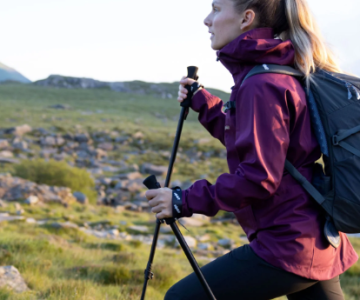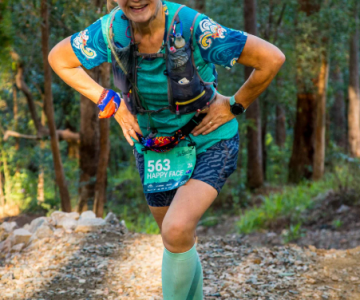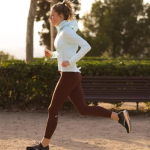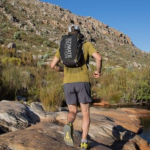Fastpacking combines the thrill of trail running with the freedom of backpacking, allowing you to cover vast distances in a short period while carrying minimal gear. However, the challenge lies in balancing lightweight packing with comfort and safety. To help you get started, this guide outlines the key principles for selecting your gear and offers tips to streamline your packing for a successful fastpacking trip.
Understanding Fastpacking Gear Principles
When it comes to fastpacking, every ounce matters. Keeping your pack weight under control is crucial for both comfort and performance. The ideal weight for your total pack should be under 9 kg (20 lbs), which includes your food and water, leaving around 4.5 kg (10 lbs) for your gear. Here’s how to get there.
Focus on Essentials First
Prioritize safety and survival gear. While the goal is to stay light, you can’t skimp on the necessities. A trip in mild conditions with a partner might allow for a pack under 4 kg (9 lbs), but more challenging weather or solo trips could require more. Be sure to pack appropriately for the conditions, and always include items for warmth, shelter, and emergencies.
Opt for Multipurpose Gear
One of the easiest ways to save weight is by choosing gear that serves multiple functions. For instance, trekking poles can double as tent supports, eliminating the need for separate tent poles. A cooking pot can also be used as a bowl and mug. This dual-purpose gear can drastically reduce pack weight without compromising on utility.
Invest in Ultralight Gear
Ultralight gear is a game-changer, allowing you to stay warm and dry without the heavy pack. For example, lightweight tarptents and down quilts are now available, often weighing under a kilo. While ultralight gear can be pricey, it’s worth testing out different models before committing. Consider borrowing gear to experiment before purchasing your own.
Trim Down Excess
Even with ultralight gear, you’ll need to make tough decisions to keep your pack under 5 kg (11 lbs). Trim down items like toothbrush handles, or take only a small portion of toothpaste. Every gram counts, but be cautious—don’t sacrifice essential items like rain gear just to save a little weight.
Share Gear with a Partner
If you’re fastpacking with others, consider sharing gear to lighten the load. You don’t need multiple shelters, stoves, or first aid kits—sharing these items can help significantly reduce weight, especially for longer trips.
Wash and Wear
You don’t need a new set of clothes every day. As long as you have clean socks and underwear, you can wash and wear your running shirt and shorts repeatedly. This minimal approach cuts down on bulk and weight while keeping you comfortable on the trail.
Plan for the Weather
Weather can be unpredictable, so always prepare for worse conditions than expected. It’s better to pack a bit extra to stay safe than to find yourself unprepared. But, using the tips above, you can ensure you’re not overburdened with unnecessary gear.
Fastpacking Gear Breakdown
Footwear
Your choice of footwear for fastpacking depends on comfort and durability. A more relaxed fit is preferable, especially for high-mileage days. Zero-drop shoes with around 20 mm of cushioning offer the right balance for most fastpackers, making it easier to land midfoot and providing ample support over rough terrain. If you’re new to zero-drop shoes, take the time to transition gradually.
Choosing the Right Pack
The pack you choose is arguably the most important gear decision you’ll make. A poorly fitting pack can cause discomfort, chafing, and energy-draining bouncing. The ideal size is around 25-30 liters, but if you’re new to fastpacking, stick to at least 25 liters to avoid being overly cramped.
Key features to look for include:
- A soft back pad that contours to your body
- A waist belt for stability
- Adjustable straps and a sternum strap to ensure a secure fit
Specific fastpacking packs like the Ultimate Direction Fastpack 25 or Six Moon Designs Flight 30 are designed to reduce bounce and offer practical features like trekking pole mounts, water bottle pockets, and extra storage compartments for gadgets like GPS.
Water Storage
Your hydration system plays a key role in keeping you fueled during your run. Options include reservoirs, water bottles, or soft bottles. While traditional hard bottles can be uncomfortable and bulky, soft bottles conform better to your body and reduce sloshing. Many fastpackers opt for a combination of soft bottles and a hydration reservoir, allowing for flexibility and easy access to water while on the move.
Tent or Tarp?
Shelter is another essential decision in fastpacking. Whether you choose a lightweight tent, tarp, or a hybrid option depends on your needs for protection and weight.
- Ultralight tents provide the most protection from the elements but tend to be heavier.
- Tarps are incredibly lightweight but offer less protection from wind and rain.
- Tarp tents are a good compromise, offering more protection without adding significant weight.
If you’re comfortable with some manual setup, shelters and tarps supported by trekking poles are a minimalist option for fastpackers.
Sleeping Gear
A quality sleeping setup is essential for a good rest on your fastpacking trip. Consider a lightweight sleeping pad, either closed-cell foam for durability and low weight or air pads for added comfort and compactness. Pair it with a down quilt for a warm yet light sleep system. Keep in mind that quilts are less restrictive than sleeping bags, providing a lighter and more flexible option.
Cooking Gear
While you can skip a stove for minimalism, carrying a small stove and cooking pot adds little weight but significantly enhances your ability to refuel. A lightweight alcohol stove is often the best option for solo fastpackers, as it’s compact and efficient. A titanium pot serves as both your cooking vessel and eating bowl, minimizing your gear even further.
Additional Items to Consider
Headlamp
A reliable headlamp is crucial for navigating in low light. Even in remote areas, it’s essential to have a light source for safety and convenience.
Toiletry Kit
Keep your toiletries minimal by transferring soap, toothpaste, and other essentials into smaller containers. A compact, breathable bag can prevent moisture buildup, ensuring your gear stays dry.
First Aid Kit
A lightweight, custom first aid kit can cover basic injuries and emergencies without taking up much space. Consider including items like blister patches, rehydration salts, and a small multi-tool for quick fixes.
Final Thoughts
The goal of fastpacking is to balance speed, comfort, and safety, all while minimizing the weight you carry. By carefully selecting gear, prioritizing versatility, and optimizing your packing system, you can enjoy extended trail runs without overburdening yourself. Test your gear, adjust as needed, and soon you’ll be ready for your own fastpacking adventure.





